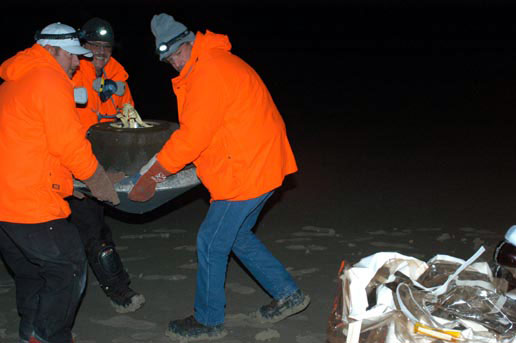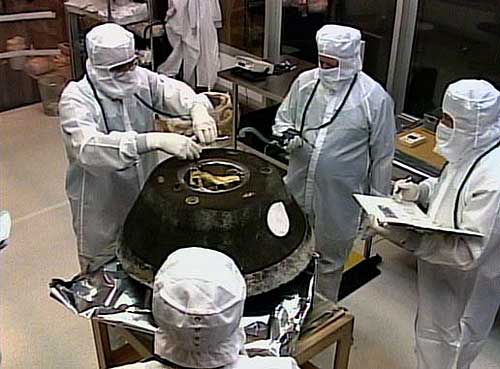 January 16, 2006
"Ten years of planning and seven years of flight operations were realized early this morning when we successfully picked up our return capsule off of the desert floor in Utah," said Tom Duxbury, Stardust project manager at NASA's Jet Propulsion Laboratory, Pasadena, Calif. "The Stardust project has delivered to the international science community material that has been unaltered since the formation of our solar system."  NASA's Stardust sample return capsule successfully landed at the U.S. Air Force Utah Test and Training Range at 1:10 a.m. Alaska time. The capsule contains cometary and interstellar samples gathered by the Stardust spacecraft. Image credit: NASA
"I have been waiting for this day since the early 1980s when Deputy Principal Investigator Dr. Peter Tsou of JPL and I designed a mission to collect comet dust," said Dr. Don Brownlee, Stardust principal investigator from the University of Washington, Seattle. "To see the capsule safely back on its home planet is a thrilling accomplishment."  Image credit: NASA
NASA expects most of the collected particles to be no more than a third of a millimeter across. Scientists will slice the particle samples into even smaller pieces for study. The sample return capsule's science canister and its cargo of comet and interstellar dust particles will be stowed inside a special aluminum carrying case to await transfer to the Johnson Space Center, Houston, where it will be opened. NASA's Stardust mission traveled 2.88 billion miles during its seven-year round-trip odyssey. Scientists believe these precious samples will help provide answers to fundamental questions about comets and the origins of the solar system. The Stardust capsule landed 2 minutes ahead of schedule at the Utah Test and Training Range southwest of Salt Lake City. NASA's Jet Propulsion Laboratory, Pasadena, Calif., manages the Stardust mission for NASA's Science Mission Directorate, Washington. Lockheed Martin Space Systems, Denver, developed and operated the spacecraft.
On the Web:
Source of News & Photographs:
Publish A Letter on SitNews Read Letters/Opinions Submit A Letter to the Editor
|